Estakhr Ancient City: Capital of the Sassanian Empire
Estakhr ancient city also known as Takht-e-Tavoos was once one of the most prosperous cities of ancient Persia and was the capital of the Sassanian Empire.
Its history stretches back around 2,000 years, and it was renowned for its grand architecture, including the stone gate, columns, and massive stone walls that trace back to the Achaemenid period and still stand today.
Estakhr also boasts the famous Estakhr Castle, built during the Azododoleh-ye-Deilami period, where a large pool once stood. Although a large pool once existed at the castle, today, only a towering ancient cypress tree stands among the ruins.
Istakhr ancient city has a strategic importance, not only as a capital during the reign of Ardashir I but also as a key stop on ancient trade routes. Over time, its exact location faded into mystery but the ruins of Estakhr are still scattered around the area, and despite its prominence, many still wonder about the true scope and details of this once-thriving metropolis.
If you’re on one of our Shiraz tours and want to explore Estakhr ancient city, this blog will take you on a journey to this historical attraction, uncovering key landmarks like Estakhr Castle and the famous Takhte Tavoos, as well as discovering its history, and the mysteries surrounding its once-glorious existence.
About Estakhr Ancient City

Estakhr, also known as Takht-e-Tavoos, was one of the most prosperous cities of ancient Iran. Renowned during the Achaemenid and Sasanian eras, this majestic city dates back to around 500 BCE.
Historical accounts suggest Estakhr extended from the northern banks of the Kor River to Pasargadae, covering an estimated area of 60 hectares, with Persepolis forming part of its vast domain.
Archaeological remains include a stone gate, columns, and stone walls, offering glimpses of its grandeur. Though exact measurements of its expanse remain uncertain, descriptions by historians and geographers indicate its significance, with parts of the city flanking the Sivand River.
What Does "Estakhr" Mean?
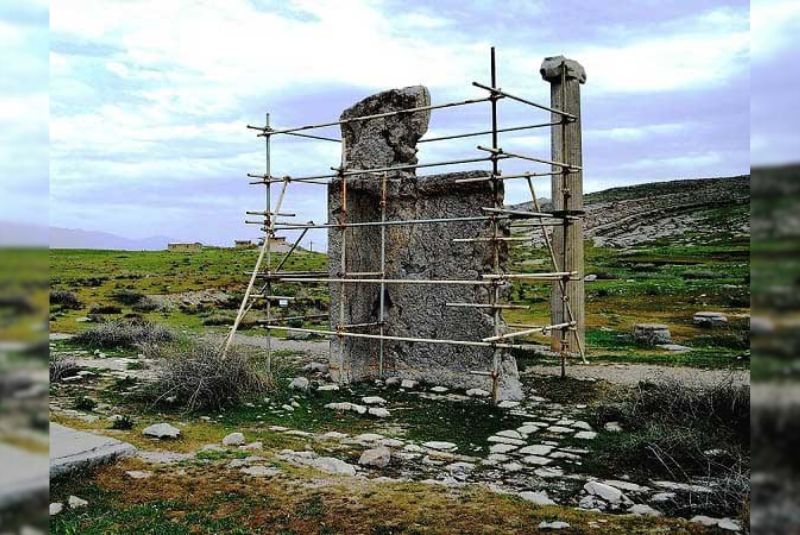
Before delving into the history of Estakhr Ancient City, it’s worth understanding the meaning behind its name. "Estakhr," or "Istakhr," is derived from the Middle Persian word Stakhr, meaning "fortress" or "stronghold."
Renowned archaeologist and Iranologist Ernst Herzfeld suggested that the term originates from Parsa-Staxra, meaning "fortress of Persia." This connection underscores the city’s strategic and cultural importance, particularly given its close proximity to Persepolis.
History of Estakhr Ancient City
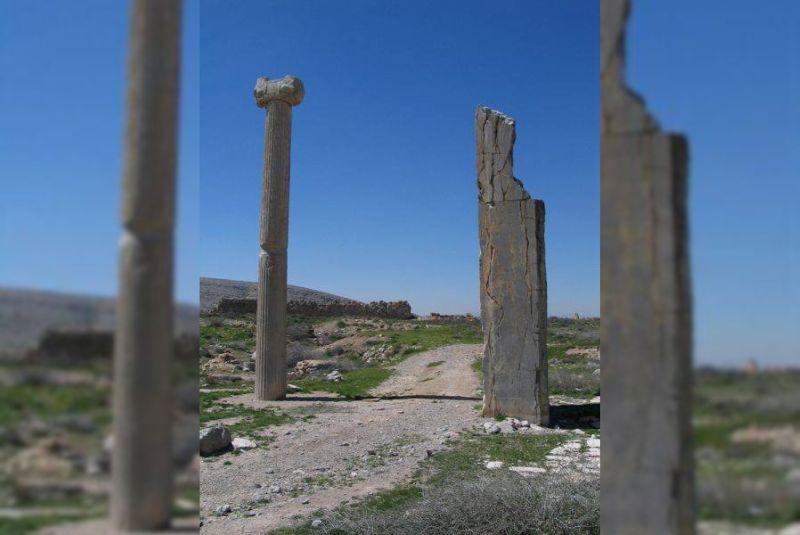
Estakhr Ancient City, also known as Takht-e-Tavoos, was a beacon of ancient Persia, renowned for its architectural grandeur and historical significance. Situated near Persepolis, this city dates back nearly 2,000 years, reaching prominence during the Achaemenid and Sasanian periods.
Estakhr served as the capital of the Sassanian Empire and was celebrated for its stone gate, towering columns, and massive stone walls. The city’s strategic location made it a key stop along ancient trade routes, enhancing its influence.Historical records suggest the city spanned 60 hectares, extending from the Kor River to Pasargadae, with Persepolis as part of its vast domain.
Under the Sasanian Empire, Estakhr flourished as a cultural and religious center for Zoroastrianism. However, the Arab invasion in the 7th century led to its decline.
The city endured repeated attacks, and its residents eventually moved to Shiraz. Today, Estakhr’s ruins serve as a testament to its once-glorious past, with this blog exploring its landmarks, history, and the mysteries that remain.
The Fate of Estakhr Ancient City Over Time

Estakhr Ancient City, or Takht-e-Tavoos, was initially governed by Achaemenid kings and is believed by some historians to have served as a residential area for Persians due to its proximity to Persepolis.
The peak of Estakhr’s glory spanned until the end of the Sassanian dynasty. During this period, it served as the primary center of Zoroastrianism and the empire's capital.
With the rise of Zoroastrianism, King Artaxerxes II commissioned the construction of a statue and temple dedicated to Anahita near Estakhr, further solidifying the city’s cultural and religious importance.
Kings like Ardashir I and Shapur I, both born in Estakhr, held their coronation ceremonies here. The remnants of these events are preserved in the stone carvings of Naqsh-e Rajab, showcasing the city’s cultural and political importance.
After Alexander the Great’s invasion, Estakhr suffered significant destruction. However, over the years, the city regained its prominence, becoming a symbol of resilience and revival. Its grandeur persisted through the Sassanian period, only to face devastation during the Arab conquest.
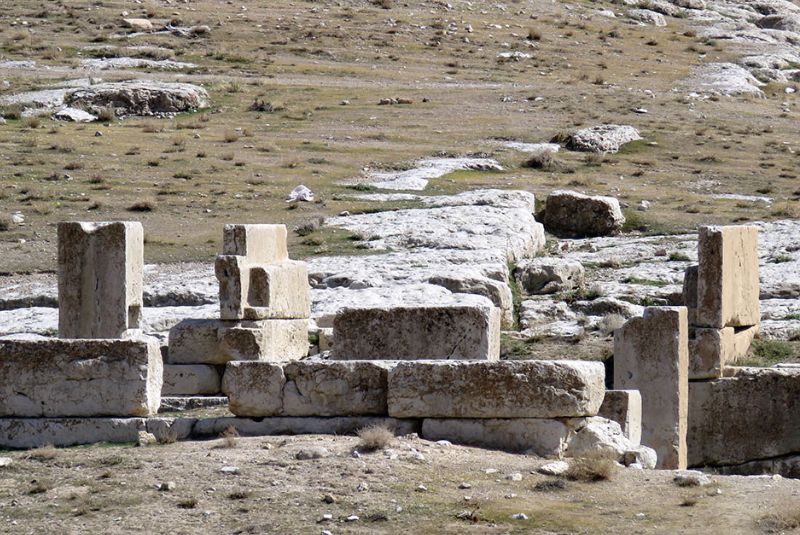
In 22–29 AH, Estakhr was heavily attacked by Arab forces due to frequent uprisings by the local population. The city, once a bastion of culture and religion, was reduced to ruins.
Concurrently, Hajaj ibn Yusuf, the governor of Iraq, fostered the development of Shiraz in the late 7th century, which gradually overshadowed Estakhr. The people of Estakhr relocated to Shiraz, leaving their once-thriving city behind.
Today, only ruins remain of this once-magnificent city. Archaeological relics such as the stone gate, columns, and walls from the Achaemenid era hint at its illustrious past, standing as a testament to Estakhr's pivotal role in Persian history.
The Strategic Importance of Estakhr in Ancient Times
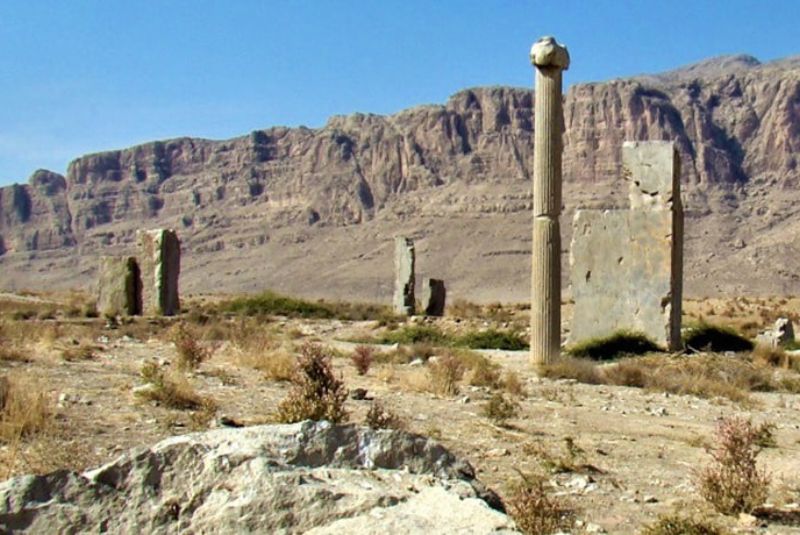
Estakhr’s strategic location contributed significantly to its prominence for the commanders of Persia. Positioned between the Rahmat Mountains and Naqsh-e Rustam, Estakhr enjoyed fertile soil and a favorable climate, which bolstered agricultural development and improved the quality of life in the region.
Like many ancient communities that formed near water sources, Estakhr thrived near the Sivand River, which played a crucial role in the city’s growth and prosperity.
Location of Estakhr Ancient City
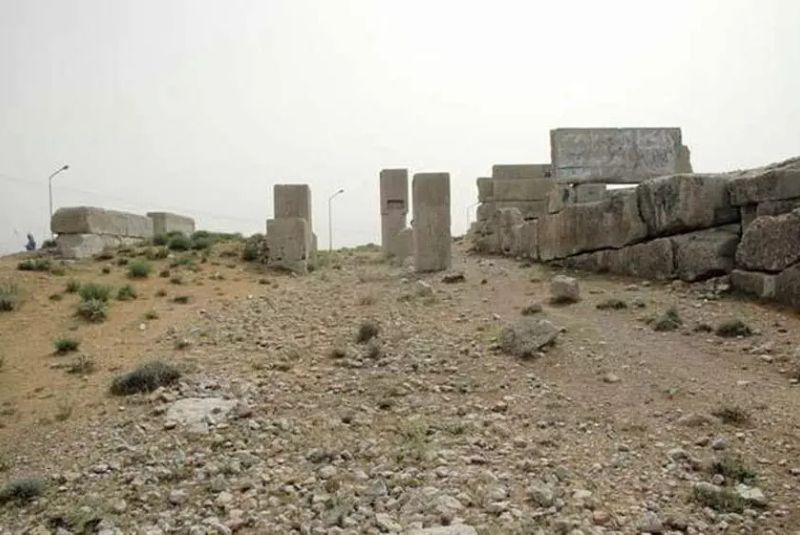
Estakhr, also known as Takht-e-Tavoos, is located in Marvdasht, Fars Province, approximately 7 kilometers from the renowned Persepolis and 54 kilometers northeast of Shiraz. Nestled within the valley of the Sivand River, the city once extended along both sides of the river.
How to Get to Estakhr
To visit the ruins of Estakhr, travelers typically start from Shiraz, the nearest major city. From Shiraz, head towards Marvdasht, following signs to Persepolis. The Estakhr ruins are located around 7 kilometers from Persepolis and can be reached by car or guided tours.
Tourist Attractions Nearby
When visiting Estakhr and the Marvdasht region, there are several nearby historical and cultural sites that should be on your itinerary. Here are some recommended attractions:
1. Naghsh-e-Rostam (Rock Reliefs of Rostam)
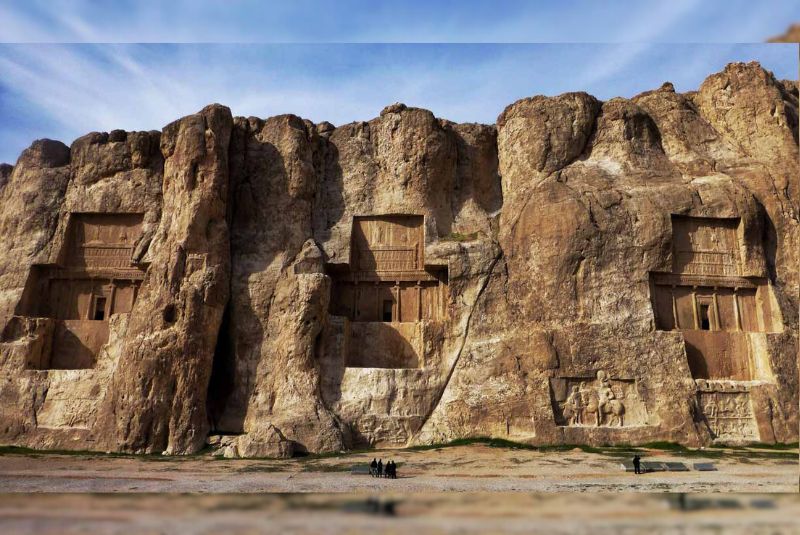
Many people mistakenly believe that Naghsh-e-Rostam is part of Persepolis, but it is an independent archaeological site. This location is famous for its ancient bas-reliefs and inscriptions, offering a glimpse into ancient Persian art and royal history. The rock carvings here depict the tombs of Persian kings, and the grandeur of these monuments can only truly be appreciated in person. A visit to Naghsh-e-Rostam is a must for anyone interested in ancient Persian history.
2. Persepolis (Takht-e-Jamshid)

Persepolis is a globally renowned site, dating back to the reigns of Darius the Great, Xerxes, and Artaxerxes I. This ancient ceremonial capital of the Achaemenid Empire was the center of royal festivities, including New Year celebrations, and served as a meeting point for dignitaries from across the empire.
The monumental ruins of Persepolis are a testament to the might of the Achaemenid dynasty and offer visitors a chance to immerse themselves in ancient Persian culture and architecture.
3. Naghsh-e-Rajab (Reliefs of Rajab)
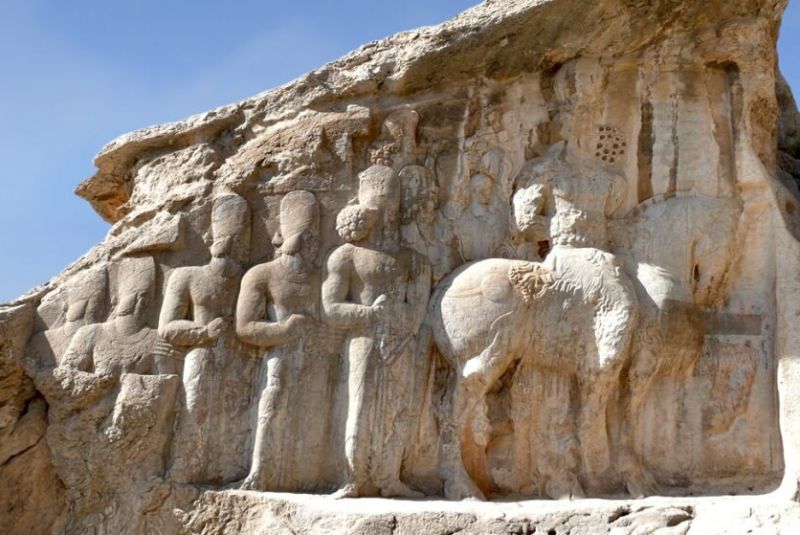
Another remarkable site near Estakhr is Naghsh-e-Rajab, which dates back to the Sasanian era. Here, visitors can view impressive rock carvings depicting three coronation scenes of Sasanian kings.
These monumental reliefs are a unique example of Sasanian art and provide a fascinating insight into the ceremonial practices of the period. The site is a must-visit for history enthusiasts and those looking to understand the grandeur of the Sassanian Empire.
4. Tel Bakun Plain
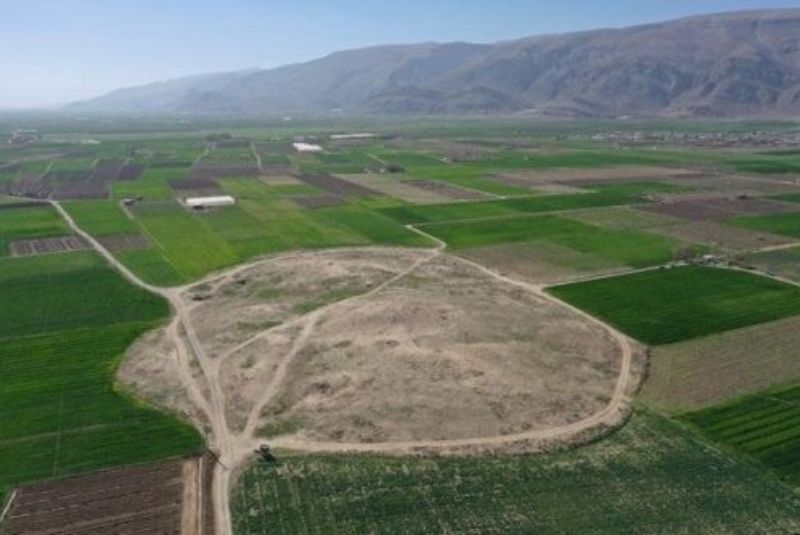
For those interested in prehistoric life, the Tel Bakun Plain is a fascinating area to explore. The region contains two ancient mounds, which were once inhabited by people approximately 3,000 to 4,000 years ago.
Excavations have revealed valuable archaeological findings, and a visit to Tel Bakun offers a glimpse into the lives of the early inhabitants of the area. This site is especially significant for those interested in understanding the development of human civilization in ancient Persia.
Bottom Line
Estakhr Ancient City, also known as Takht-e-Tavoos, was once a thriving metropolis and the capital of the Sassanian Empire. Located near Persepolis, this ancient city boasted impressive architecture, including massive stone walls, columns, and gates dating back to the Achaemenid period. Its strategic location along ancient trade routes contributed to its prosperity.
Estakhr served as a cultural and religious center, and its role as the capital during the reign of Ardashir I marked a high point in its history. Though much of the city is in ruins today, its significance in Persian history remains clear.
The surrounding area also features remarkable archaeological sites, including Persepolis, Naghsh-e-Rostam, and Naghsh-e-Rajab, making Estakhr a key destination for history enthusiasts exploring Iran's rich ancient heritage.
Share your story!
Comment below and let us know about your Experience.
Your story inspires others!


Comment
Leave a Comment